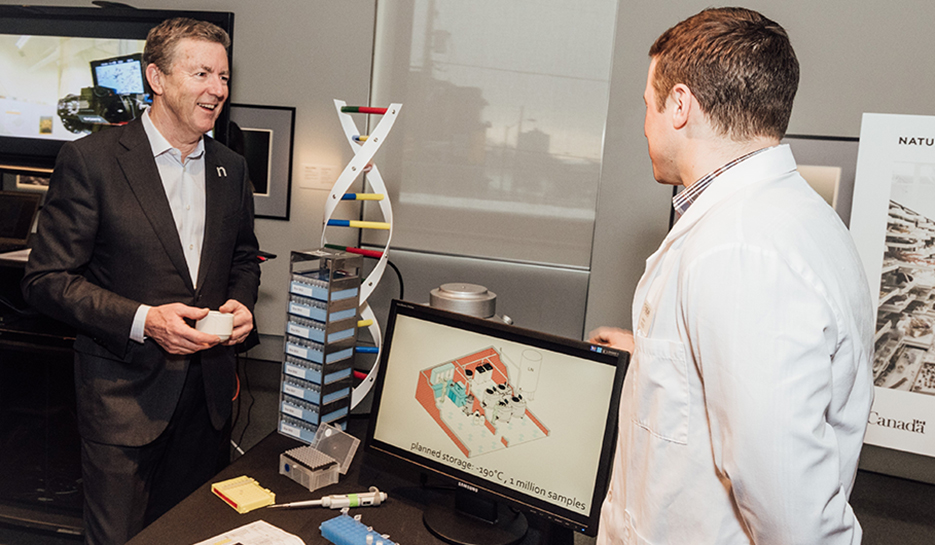Museum gets largest donation ever
By Nicole Babb
A state-of-the-art facility for freezing tissue samples, a new fellowship for researchers and the digitization of hundreds of thousands of Arctic specimens are three initiatives the Canadian Museum of Nature is pursuing after receiving its largest ever donation — $4 million — last month.
The record-setting gift was made by Vancouver-based geologist Ross Beaty and his family. Beaty made his fortune in the mining industry and is the founder of Canadian-based Pan American Silver Corp. He said he made the donation because he has a passion for nature and the environment.
“Less than one per cent of human philanthropy goes to nature and the environment. Yet our one species is having such a heavy footprint on the other millions of species that don’t have voices,” Beaty said when the donation was announced in February.
“I’m most pleased to lend my support to the museum and its research expertise.”
The donation will help the McLeod Street museum train new scientists, store collections and make information available online, said Mark Graham, the CMN’s vice-president of research and collections.
Half of the money will go towards establishing a new state-of -the-art cryogenic collection facility at the museum’s Gatineau campus.
The facility will include a well-insulated room with mechanical and chemical freezers that preserve the DNA of plants and animals at extremely cold temperatures. The mechanical freezers cool to -80 C and the chemical freezers use liquid nitrogen to reach -190 C.
The room will store one million samples of plant and animal tissues, including muscle fibres, blood samples and fish fin clips, said Roger Bull, the coordinator of the museum’s molecular biodiversity research lab.
“We’ve been dreaming of a facility like this for maybe the past ten years,” said Bull. “It is really an important part of a modern natural history museum to be able to preserve tissues like this.”
The facility will be the first national repository of frozen tissue samples dedicated to biodiversity in Canada. Researchers have already started contacting the museum in hopes of storing specimens at the new facility, said museum president Meg Beckel.
The donation will also fund the digitization of the museum’s Arctic collection, which includes 350,000 specimens — among them, many rare Arctic plants, animals, fossils and minerals.
Digitization involves taking high-resolution images or 3D scans of specimens, attaching the image to data about the specimen and uploading the information to the museum’s website.
“Digitizing the Arctic collection will enable us to provide digital access of our collection to scientists, public policy makers and the general public all over the world,” said Beckel. “Rather than people having to fly to Ottawa and spend days meeting with our curators and scientists, they are able to access the information online.”
Digitization of the collection is expected to be completed within three years. The donation will also fund a fellowship that will allow scientists to conduct research on species at risk.
“The post doctorate fellowship will provide an opportunity for us to develop the next generation of scientists interested in collection-based research,” Beckel said.
The first fellowship will start next year.
“All these projects are things that move us ahead in a significant way,” said Graham.
Beckel said she’s hopeful the donation will encourage others to support the museum’s research.
“We hope this transformational gift will inspire others to support the work of the museum, as we expand the museum’s ability to share its knowledge worldwide,” she said.

